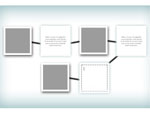Diana Laufenberg on Teaching History Thematically

History is a series of events and causal relationships, stories and tragedies and successes, that when strung together weave narratives of peoples and places. To teach this has proven quite tricky throughout American education. Any history teacher watching Jay Leno and his random trivia questions cringes in horror at the utter lack of historical understanding in the greater American populace. However, one must ask, "If we teach history every year in school, why do the students retain so little of the information?"
This is the perfect time to invoke Einstein's famous quote, "Insanity: doing the same thing over and over again and expecting different results." After a number of years of teaching history chronologically, I made the curricular decision to shift to a thematic approach. I am privileged to work in schools that allow me the flexibility to make these types of classroom decisions.
My rationale for this change was grounded in a number of gut-check teacher experiences but also in the writings of Sam Wineburg, Eric Foner, David Perkins, and James Loewen. America has never excelled at knowing its own past. As I watched the school days pass, I observed that students participated and engaged, but still did not meaningfully retain the information. Something had to give. I ditched chronological teaching.
The way that I choose to envision the problem for the average student of history involves papers, books, and bookshelves. We teach students history by giving them pieces of paper (facts) with no real understanding of how to connect or make meaning. These papers stack up, but the learner can never find anything because the information is without structure or organization. Our students need bookshelves before we can really expect them to put any of the information away. Once the bookshelves exist, they can then begin to shelve their information in a way that allows for understanding and recall. In my classroom, each of the themes then becomes a shelf and as students understand the greater historical narrative they look for patterns and trends and flow over time. This long look at history invites the student into the story. Also, it provides shelves on which they can then store historical knowledge as they move into adult life.
The themes that I teach in American History are: American Identity, Political Participation, War, Business, Balance of Power, The American Dream, Environment, and Pivot Points. This is certainly not a comprehensive list or the "right" list, but it is the one that I settled on after much collaboration, discussion, and debate with a number of teachers. We work through two themes per quarter and have a project attached to the learning goals of each theme.
One unit that gets better each time I teach it is the War unit. Many K-12 history students feel like history class is one long study of America at War, rather than of the rich narrative that accompanies the nation’s endeavors. My War unit asks students to define war. One would think that with the amount of conversation about war we foster in America that this would be an easy process. Let me assure you it is not.
I start by asking students to write their own definition, then work with a partner to get one definition between the two.
After that, the partners join another partnership. We stop for a bit at this point and the students take their group definition and apply it to the American historical record. Each student is responsible for a section of years and applies their group's war definition to determine if America was at war that year. They then name the war and the place it occurred and report the death tolls. This is a bit time consuming, but I find that this process makes students reconsider the definition as well as thoroughly examine the historical record. We then return to the definition activity and repeat the consensus process until we get to a whole-class discussion.
The goal of the whole-class discussion is for the students to come to consensus on the definition of war. It takes all 65 minutes of class. I do not actively participate at all; I observe. This is about them and their ideas. The students sit in a circle and decide a process and go. Watching it unfold this year was like educational bliss: students asking really tough questions, listening hard to the answers, pushing back when they did not agree—but doing so respectfully, other students making sure each person’s voice was honored in the process. In the end they have a definition, but they also have a sense of the concept that I could not possibly instill in them in any other way. They did this. The creation of the definition was also the creation of their learning.
We then layer this theme over the previous themes and discuss connections and patterns and flow and trends that exist when we look at multiple themes at once. Then we move forward with another theme. By the end of the year they have seven shelves onto which to load their learning. The final unit has students choose a pivotal point in history and change the outcome. This final unit draws upon all the previous themes to craft a story that retells history.
Thematic teaching may not be the answer to improve the responses for the Jaywalk All-Stars, but in my 14 years of teaching, I have never felt more confident that my students are learning history in a way that allows them to learn beyond my classroom, beyond the textbooks, and beyond the boredom that many of them attribute to history class. Our struggles as a nation require a populace that is engaged and informed. Our history classes need to be a place that establishes the framework that assists them in becoming the citizens we need them to be. I believe that thematic teaching moves us closer to that goal.
For more ideas on teaching strategies that stretch beyond the conventional chronological, browse our Teaching Guides. In one example, high-school teacher Lori Shaller offers another way of interrupting and challenging students' understanding of history as monolithic narrative with the "Stop Action and Assess Alternatives" strategy.
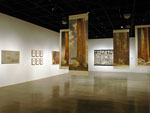
 My students get excited anytime I mention the words “field trip,” and with good reason. Field trips not only offer students a get-out-of-school-free card, but also offer them a chance to learn through interacting and experiencing. When money and time are tight, field trips are cut. That is why I am thrilled that technology is allowing students to take
My students get excited anytime I mention the words “field trip,” and with good reason. Field trips not only offer students a get-out-of-school-free card, but also offer them a chance to learn through interacting and experiencing. When money and time are tight, field trips are cut. That is why I am thrilled that technology is allowing students to take  Another instructional idea that blends history with understanding art is to select a group of romantic paintings, a group of realist paintings, and a group of impressionist paintings and discuss the different styles of paintings and the emotions each elicits. For example, many romantic paintings glorify subjects and can stir feelings of nationalism, while realist paintings can capture the daily hardship and struggles individuals must endure. Teachers can discuss with students how different styles of paintings capture prevalent ideas and emotions of the artists’ societies.
Another instructional idea that blends history with understanding art is to select a group of romantic paintings, a group of realist paintings, and a group of impressionist paintings and discuss the different styles of paintings and the emotions each elicits. For example, many romantic paintings glorify subjects and can stir feelings of nationalism, while realist paintings can capture the daily hardship and struggles individuals must endure. Teachers can discuss with students how different styles of paintings capture prevalent ideas and emotions of the artists’ societies. 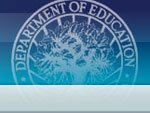

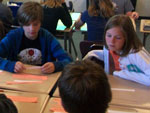
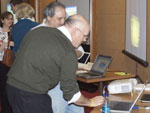









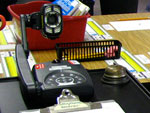
 Some document cameras come with a freeze image button which is a great feature to capture a page in a book or map that might be difficult to hold in place. If the document camera does not have this feature, you can hook up the document camera directly to the video projector, which often has the ability to freeze an image. If your document camera is not one that hooks up to your computer via USB, you can also set up the document camera directly to your projector. This allows you to toggle between the image on your computer screen (assuming it too is attached to your video projector) and the image from your document camera. You can also connect most document cameras to a television using an S-video cable or component video cable. It should be noted, however, that the clarity is not as crisp when using the S-video cable or component video cable compared to using a VGA or DVI connection.
Some document cameras come with a freeze image button which is a great feature to capture a page in a book or map that might be difficult to hold in place. If the document camera does not have this feature, you can hook up the document camera directly to the video projector, which often has the ability to freeze an image. If your document camera is not one that hooks up to your computer via USB, you can also set up the document camera directly to your projector. This allows you to toggle between the image on your computer screen (assuming it too is attached to your video projector) and the image from your document camera. You can also connect most document cameras to a television using an S-video cable or component video cable. It should be noted, however, that the clarity is not as crisp when using the S-video cable or component video cable compared to using a VGA or DVI connection. 